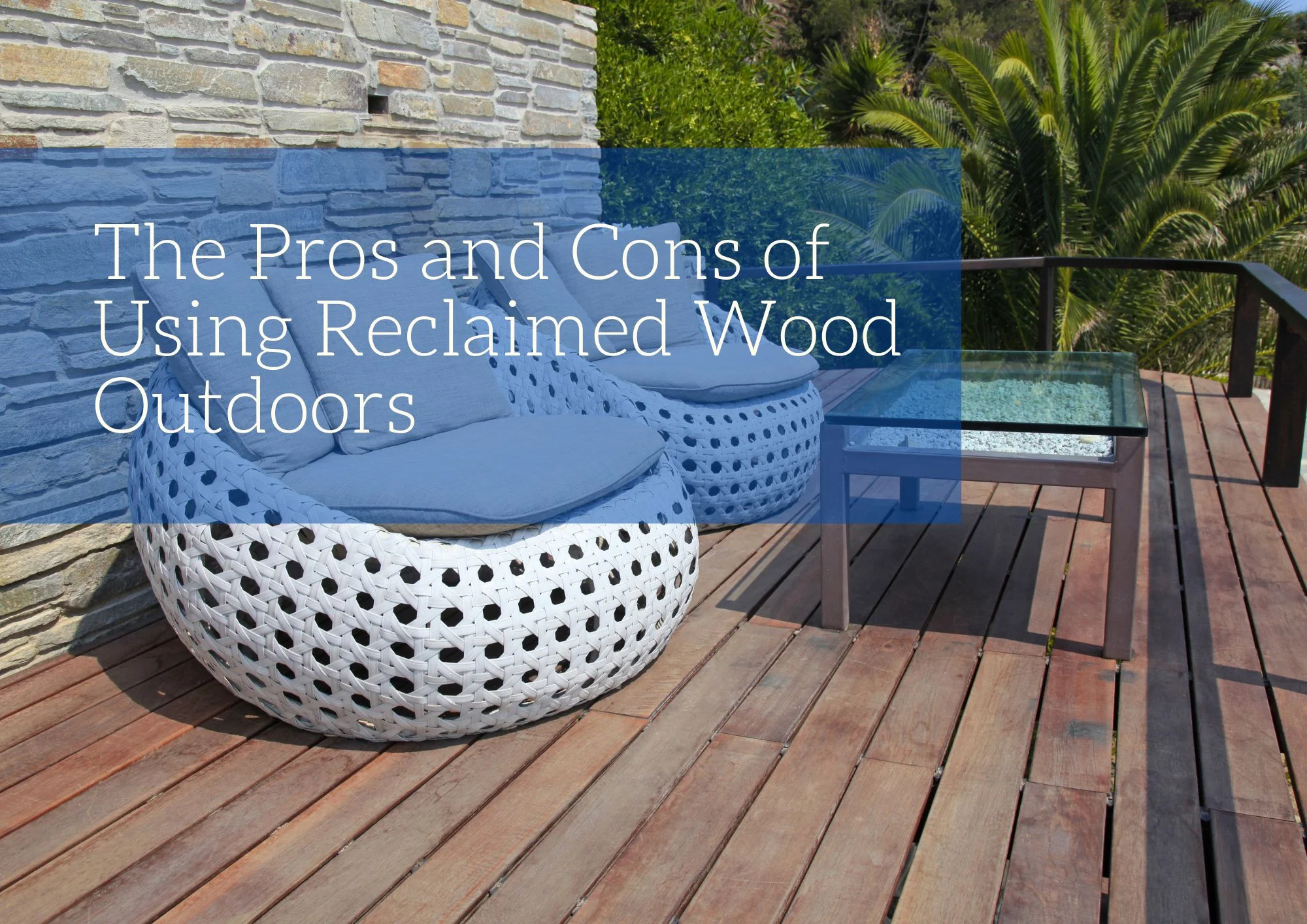Recent Posts

In a world where sustainability is gaining importance, using reclaimed wood in outdoor furniture has become a popular choice for eco-conscious consumers. Reclaimed wood, often sourced from old barns, factories, or other structures, offers a unique blend of history, character, and environmental responsibility. However, like any material, it comes with its advantages and disadvantages. In this blog, we’ll explore the pros and cons of outdoor furniture fashioned from reclaimed wood.
Reclaimed wood helps reduce the demand for fresh timber, thus preserving forests and minimizing deforestation. By repurposing wood from old structures, we contribute to conserving natural resources.
Each piece of reclaimed wood tells a story through its weathered appearance, knots, and imperfections. This adds character and a sense of history to your outdoor space, creating a one-of-a-kind aesthetic that cannot be replicated with new materials.
Reclaimed wood has undergone natural weathering, making it more resistant to the elements. Reclaimed wood can be a long-lasting choice for outdoor furniture when properly treated and maintained.
Using reclaimed wood connects us to the past. Pieces of furniture made from wood salvaged from old structures can carry a sense of cultural and historical significance, adding depth to your outdoor living space.
The production of new furniture often involves significant energy consumption. By using reclaimed wood, we contribute to a lower carbon footprint since there’s no need for the energy-intensive processes of logging, transporting, and processing new timber.
Due to the labor-intensive process of salvaging and preparing reclaimed wood, furniture made from it tends to be more expensive than items crafted from new materials. The unique history and environmental benefits, however, may outweigh the higher upfront cost for some consumers.
Reclaimed wood may harbor pests such as termites or beetles, especially if not adequately treated. Ensuring that the wood has been appropriately inspected, treated, and certified is essential to avoid potential infestations.
As the popularity of reclaimed wood grows, the supply becomes more limited. Finding the right type and quantity of reclaimed wood for a specific project can be challenging, and sourcing may require extra time and effort.
While reclaimed wood is durable, it still requires proper maintenance to withstand outdoor conditions. Regular sealing and protection from harsh weather are essential to ensure the longevity of the furniture.
Reclaimed wood can be transformed into a stunning deck or patio, adding a touch of history and character to your outdoor living space.
Give your home a unique and eco-friendly facelift by using reclaimed wood as siding. The wood’s weathered charm can enhance your exterior’s visual appeal.
Create a rustic and distinctive fence using reclaimed wood. This not only adds privacy to your outdoor area but also contributes to a sustainable and stylish fencing solution.
While reclaimed wood is an excellent choice for roof decking due to its environmental benefits, its aesthetic appeal becomes even more pronounced when used as roof shakes, elevating the overall look of your home.
Infuse a sense of adventure and sustainability into your children’s play space by constructing a treehouse using reclaimed wood. It not only provides a safe and enjoyable environment but also teaches them the value of repurposing materials.
Enhance your garden’s charm using reclaimed wood for flower or garden beds. The weathered appearance of the wood adds a touch of natural elegance to your outdoor landscape.
Reclaimed wood emerges as a compelling option in the quest for sustainable and aesthetically pleasing outdoor furniture. By carefully weighing the pros and cons, consumers can make informed decisions that align with their values and preferences. Embracing the beauty of reclaimed wood not only enhances our outdoor spaces but also contributes to a more eco-friendly and mindful approach to furniture choices.
Visitors welcome by appointment only.
Copyright © 2025 Old World Timber. All Rights Reserved.